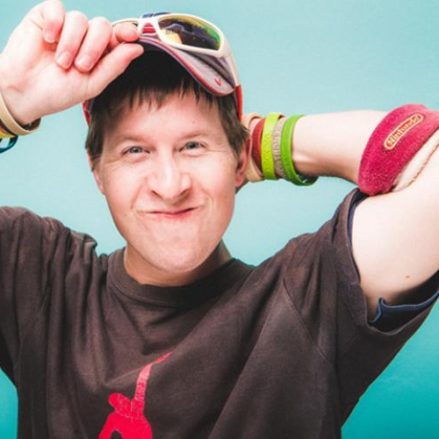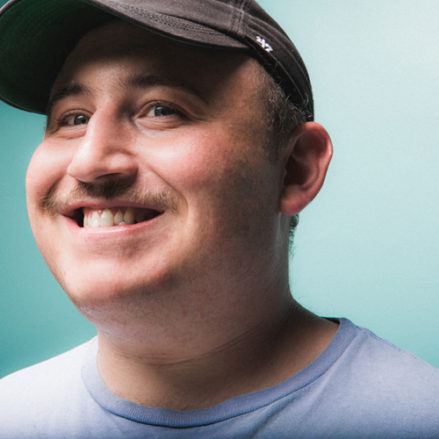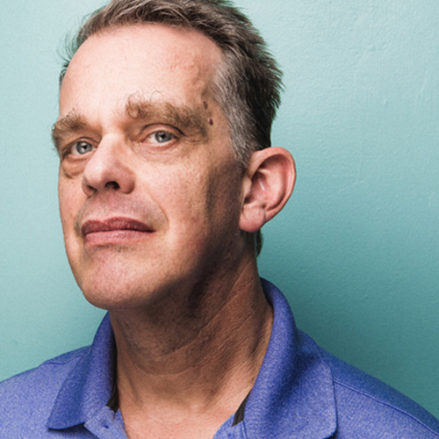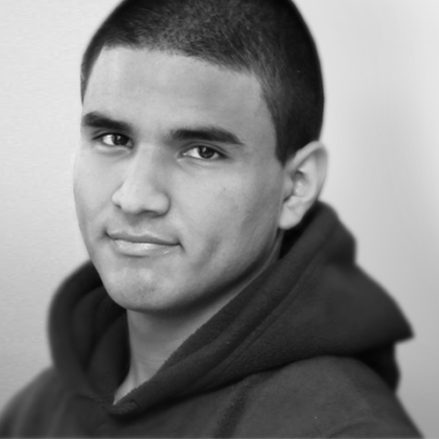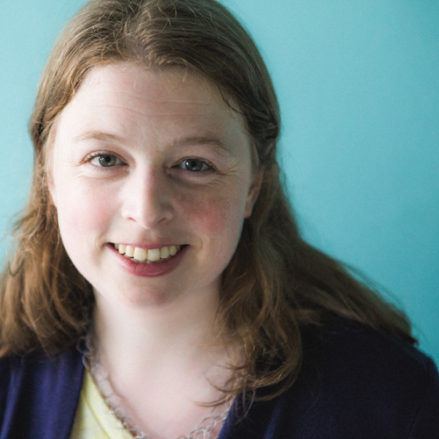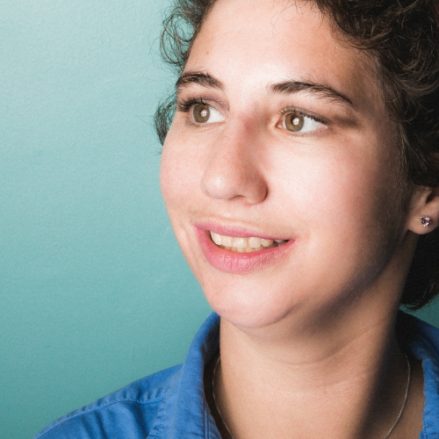At Independent Futures, our mission is to help craft a world where every individual has access to all opportunities of a full life. Our mission is to support people with disabilities, but we must condemn racism in all its forms. We are committed to expanding access to our supports and programs as much as we possibly can.
Rather than release a statement talking about what we have done as an organization, we want to highlight the voices of our staff. At least ¾ of our staff have attended the Beyond Diversity workshops sponsored by Evanston Cradle to Career, and those staff members created a DEI working group that finds new ways to expand access to our programs. Our staff members are conscious of how the personal is political, so we asked them to share how race affects their life and work. These are their responses:
Ann Sickon, Executive Director
 I believe that societal change only comes when each person recognizes they have a role to play in making needed changes in our reality. Policies, regulations, and federal and state laws, though perhaps well intentioned, can be subverted and destructive when our citizens do not demand equal protection under the law for everyone.
I believe that societal change only comes when each person recognizes they have a role to play in making needed changes in our reality. Policies, regulations, and federal and state laws, though perhaps well intentioned, can be subverted and destructive when our citizens do not demand equal protection under the law for everyone.
Still, these demands alone are not enough. We must expand our awareness of current policies and rules, and then we must root out discriminatory racial practices. We each have the responsibility to identify ways to create fair and equitable employment opportunities and opportunities for every voice and persuasion to be heard. Everyone must have the opportunity to live their fullest life.
Kathy Lyons, Director of New Futures Initiative Training & Consultation
 I believe that there are no spectators in the fight against racism. Either we are actively working to dismantle racism, or we are perpetuating it. In our work, we can make systemic change – eradicating racism in our educational institutions, health care systems, economic systems, housing systems, and justice system. Taking action means:
I believe that there are no spectators in the fight against racism. Either we are actively working to dismantle racism, or we are perpetuating it. In our work, we can make systemic change – eradicating racism in our educational institutions, health care systems, economic systems, housing systems, and justice system. Taking action means:
- Learning, listening, and leveling what has never been an even playing field
- Thinking about who’s at the table, in the room, and who never got into the building
- Sharing, or giving up, your seat at the table
- Filling the room with voices different from yours and then doing what those different voices demand
- Recognizing the contributions and sacrifices of those who actually built the buildings
- Seeing our common humanity and standing up when others do not
Rob Larson, Community Life Coordinator & Life Skills Tutor

I’m inspired to work at Independent Futures because it’s a visionary model where people with disabilities and their families have the opportunity to explore life in the context of dignity and community. Even visionary models need to face very real obstacles when building community and systemic racism is one of those.
I learned about Evanston’s history with systemic racism. I also learned that it was hard for some Evanston families to afford our services due to the lack of funding in Illinois and many of these families were people of color. I felt like we were missing out on the vibrant gifts of many Black, Asian and Hispanic families. I’m refreshed when I remember that we belong to one another. Independent Futures has created some free activities and a scholarship fund to remove some barriers. We still have a long way to go, but as other states have embrace funding community inclusion, why should Illinois families be robbed of that opportunity?
Regarding race, gender and sexual orientation, I’m a straight white male. By outward markers it is clear that I benefit from a confluence of power, especially white patriarchal privilege. I held some toxic views and didn’t even realize it. It’s been life giving to struggle toward love and liberation together, with all sorts of people from all walks of life. In the process, I made surprising friendships and was freed from the toxic views which were robbing me of joy.
I look forward to being with you and learning from you. I am eager to dismantle oppressive systems and create opportunities for families to thrive. I have faith that people will flourish wherever love is planted and justice is watered. I’m looking forward to walking in that garden with y’all.
Connor Larsen, Communications & Marketing Manager
 My relationship with race and social justice issues is constant and it is personal. At work and at home, I continue to educate myself on others’ experiences while participating in active & progressive citizenship. Some of the ways I practice active citizenship include:
My relationship with race and social justice issues is constant and it is personal. At work and at home, I continue to educate myself on others’ experiences while participating in active & progressive citizenship. Some of the ways I practice active citizenship include:
- signing petitions,
- contacting my government representatives,
- reading policy proposals,
- supporting candidates I believe in through donations and volunteering,
- voting in every election, even local primaries.
In each of these actions, I am using my power and often my privileges to move the people around me – and those who represent me – toward a more just and equitable future. In doing this work, I offer an open invitation to anyone who would like to learn more and join in!
Sharon Purdy, School & Agency Consultant
 My hope is that Independent Futures can someday provide equal opportunities for inclusion for all people with disabilities in Evanston. Unfortunately, Independent Futures’ supportive and effective programming is not affordable to many in our community.
My hope is that Independent Futures can someday provide equal opportunities for inclusion for all people with disabilities in Evanston. Unfortunately, Independent Futures’ supportive and effective programming is not affordable to many in our community.
Currently, many of the students and families whose transition planning we support through Evanston Township High School do not have access to person-centered programs such as ours upon graduation. I hope that we will continue to expand the after school activities that we have been able to provide through generous grants and professional commitment. I also hope we will continue to develop an environment where everyone can flourish.
Our participation in Courageous Conversations has opened important dialogue among our staff. I’m proud that we have been intentional about learning from each other. Let’s share these conversations with our whole community. I read this on a yard sign yesterday: I pledge to speak out against actions and systems of oppression that have an unjust racial impact. I also pledge to continue to learn from the young adults in our community with an open heart and action.
Amy Fox, Director of My Full Life Training & Consultation
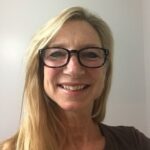 At a most basic level, if we assume that we all have a social responsibility to one another, then our job as a society is to help one another. We must honor our social contract to access this greater good and it may require surrendering something for the greater good.
At a most basic level, if we assume that we all have a social responsibility to one another, then our job as a society is to help one another. We must honor our social contract to access this greater good and it may require surrendering something for the greater good.
This implicit bias training came up in a news piece yesterday. It is broken out into a variety of categories on implicit bias including race, sexuality, and disability. It is our duty to know where our own biases are and work to consciously correct them.
Finally, this poem by Langston Hughes gives me pause for reflection on a dream deferred.
“Harlem” by Langston Hughes
What happens to a dream deferred?
Does it dry up
like a raisin in the sun?
Or fester like a sore—
And then run?
Does it stink like rotten meat?
Or crust and sugar over—
like a syrupy sweet?
Maybe it just sags
like a heavy load.
Or does it explode?

 There are several steps to preparing for an election, like we outlined in our
There are several steps to preparing for an election, like we outlined in our 
 One of our favorite tools is
One of our favorite tools is 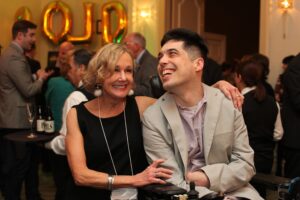 Have you heard about how much fun our Evanston events are from your friends? Do you want to experience an event that illustrates what it means to fully include people with disabilities? Join us at
Have you heard about how much fun our Evanston events are from your friends? Do you want to experience an event that illustrates what it means to fully include people with disabilities? Join us at 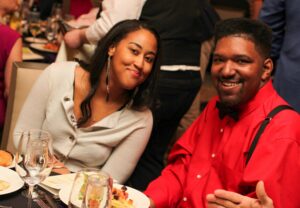 We view SPARK as an opportunity to celebrate our whole community, including Independent Futures’ participants, families, employees, donors, and community partners. That means there will be dancing, dinner, and a lot of chances for fun!
We view SPARK as an opportunity to celebrate our whole community, including Independent Futures’ participants, families, employees, donors, and community partners. That means there will be dancing, dinner, and a lot of chances for fun! 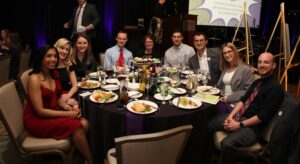 Let all your friends know you’re busy on Saturday, November 7th now, and get your tickets online today
Let all your friends know you’re busy on Saturday, November 7th now, and get your tickets online today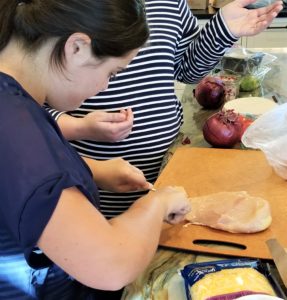 Because of our
Because of our 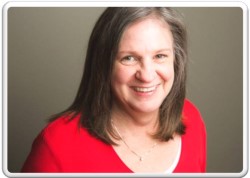 Another tutor, Cynthia Witherspoon, said, “During the first week Independent Futures instituted the work from home policy I met with the participants I tutor using texts, FaceTime, and phone calls.” However, as the governor modified the stay-at-home order, “I returned to meeting in person with most of my participants in their homes. We practice safe distancing and I always wear a mask. For those who have not felt comfortable returning to face to face meetings, I stay in touch with FaceTime or phone calls.”
Another tutor, Cynthia Witherspoon, said, “During the first week Independent Futures instituted the work from home policy I met with the participants I tutor using texts, FaceTime, and phone calls.” However, as the governor modified the stay-at-home order, “I returned to meeting in person with most of my participants in their homes. We practice safe distancing and I always wear a mask. For those who have not felt comfortable returning to face to face meetings, I stay in touch with FaceTime or phone calls.”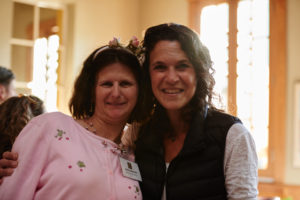 Working and tutoring remotely meant new challenges for tutors and participants. The first step was figuring out how sessions could continue. Dee Dee shared, “We have been very creative by using screen share, dictation, and new forms of learning to do daily tasks.”
Working and tutoring remotely meant new challenges for tutors and participants. The first step was figuring out how sessions could continue. Dee Dee shared, “We have been very creative by using screen share, dictation, and new forms of learning to do daily tasks.”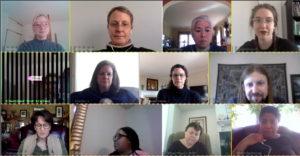 As we all adjusted slowly to the necessary COVID-19 precautions, our tutoring participants adjusted too. “At first, participants would tease me about wearing a mask and gloves, maintaining 6 feet of distance, and putting items on the ground,” Cynthia said. “Now everyone sees these as common practices, and they are respectful of the guidelines I follow. They know I am doing it to protect them.”
As we all adjusted slowly to the necessary COVID-19 precautions, our tutoring participants adjusted too. “At first, participants would tease me about wearing a mask and gloves, maintaining 6 feet of distance, and putting items on the ground,” Cynthia said. “Now everyone sees these as common practices, and they are respectful of the guidelines I follow. They know I am doing it to protect them.”  Our training is based on our own experience creating Community Living Options™. Our CLOs are creative solutions to support adults with disabilities who want to live in a community of their choice.
Our training is based on our own experience creating Community Living Options™. Our CLOs are creative solutions to support adults with disabilities who want to live in a community of their choice. 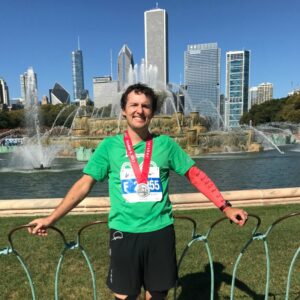 For Nick Connell, Community Builder at the Chicago Ave. House, the routine is similar. He and the other residents meet for a daily “hello and chat,” and then he would spend time with his family, play soccer, or practice one of his hobbies.
For Nick Connell, Community Builder at the Chicago Ave. House, the routine is similar. He and the other residents meet for a daily “hello and chat,” and then he would spend time with his family, play soccer, or practice one of his hobbies. 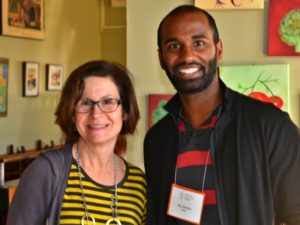 Nick and Aby each face different challenges. For Nick, scheduling and communication can be challenges, “especially in the beginning of forming our community.” These are two challenges that can only be overcome with practice.
Nick and Aby each face different challenges. For Nick, scheduling and communication can be challenges, “especially in the beginning of forming our community.” These are two challenges that can only be overcome with practice.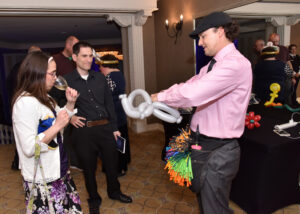 Though Community Builders face many demands on their time, they find joy in the small interactions the community shares. They see each resident every day. Though the Community Builder may offer support and advice, they also receive support in their lives.
Though Community Builders face many demands on their time, they find joy in the small interactions the community shares. They see each resident every day. Though the Community Builder may offer support and advice, they also receive support in their lives. 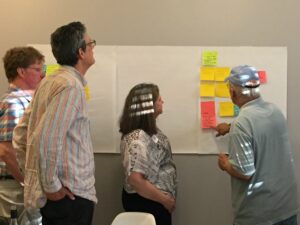 For our New Futures Initiative training, we ask that the initial families find others to go through the training with them. A New Futures Initiative training typically includes 5-10 families all seeking to create housing for a loved one with a disability. We call this a “family group.”
For our New Futures Initiative training, we ask that the initial families find others to go through the training with them. A New Futures Initiative training typically includes 5-10 families all seeking to create housing for a loved one with a disability. We call this a “family group.” 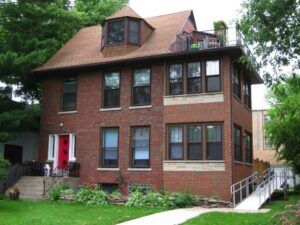
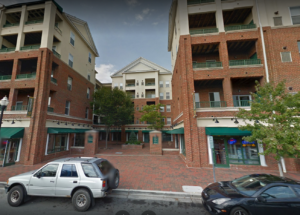
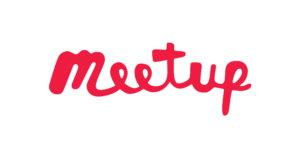 Use social media platforms such as Facebook and Twitter to publicize your efforts.
Use social media platforms such as Facebook and Twitter to publicize your efforts. 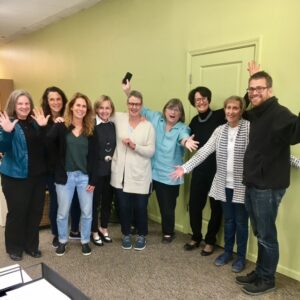 Engage families through programs such as Best Buddies, Special Olympics, Special Recreation Departments, camps, arts and theatre programs, and other types of recreation.
Engage families through programs such as Best Buddies, Special Olympics, Special Recreation Departments, camps, arts and theatre programs, and other types of recreation. 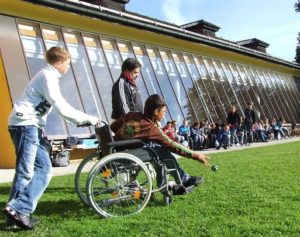 Historically, the term
Historically, the term 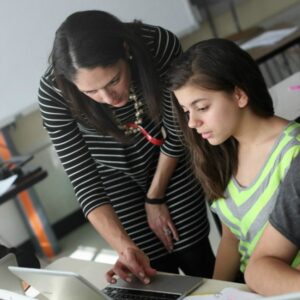 All we can do in the meantime is be understanding of one another. A learner may have more trouble focusing than usual, or their internet connection may be down. By allowing each other to have space in these strange times, we can all get through this together.
All we can do in the meantime is be understanding of one another. A learner may have more trouble focusing than usual, or their internet connection may be down. By allowing each other to have space in these strange times, we can all get through this together.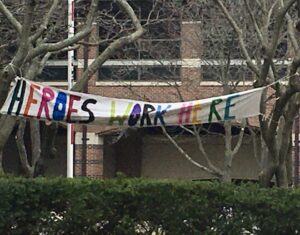 At Independent Futures, we have made tough decisions to cancel our activities through the end of April. We have also
At Independent Futures, we have made tough decisions to cancel our activities through the end of April. We have also 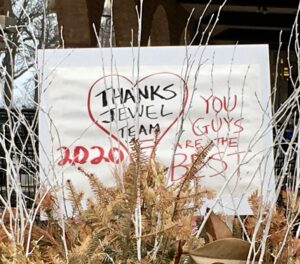 Our friends at Access Living created
Our friends at Access Living created 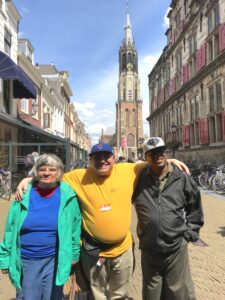 Today, my Search Beyond Adventures group went to Brussels in Belgium. We had to wake up at around 6 am in the morning, and we ate breakfast at around 7 am in the morning. Then, a shuttle van arrived in front of our Amsterdam hotel. We got in the shuttle van, and it took about 2-3 hours to drive in the shuttle from Hoofddorp, Netherlands, to Brussels, Belgium.
Today, my Search Beyond Adventures group went to Brussels in Belgium. We had to wake up at around 6 am in the morning, and we ate breakfast at around 7 am in the morning. Then, a shuttle van arrived in front of our Amsterdam hotel. We got in the shuttle van, and it took about 2-3 hours to drive in the shuttle from Hoofddorp, Netherlands, to Brussels, Belgium.  In the street, we danced to music by street musicians who did cover versions of songs such as “Despacito” by Luis Fonsi and Daddy Yankee. We also went to a cathedral and took photos inside and outside of the cathedral. Later, I ate a Belgian waffle with chocolate syrup on top. It tasted creamy and sweet and tender.
In the street, we danced to music by street musicians who did cover versions of songs such as “Despacito” by Luis Fonsi and Daddy Yankee. We also went to a cathedral and took photos inside and outside of the cathedral. Later, I ate a Belgian waffle with chocolate syrup on top. It tasted creamy and sweet and tender. 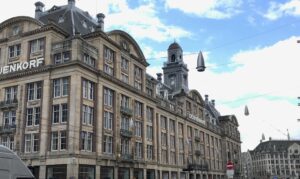 After we took a tour of the pottery factory in Delft, we ate lunch at a Mediterranean restaurant. I ordered a chicken wrap sandwich with lettuce ketchup and mayonnaise and French fries on the side. After lunch, we strolled through Delft, Netherlands viewing the canals, cathedrals, and even a horse drawn carriage.
After we took a tour of the pottery factory in Delft, we ate lunch at a Mediterranean restaurant. I ordered a chicken wrap sandwich with lettuce ketchup and mayonnaise and French fries on the side. After lunch, we strolled through Delft, Netherlands viewing the canals, cathedrals, and even a horse drawn carriage.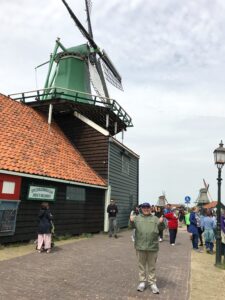 Today, we woke up at around 5 am and ate breakfast. Then, we went into the city of Amsterdam. Our first stop was to visit the Anne Frank House. This is the same house that Anne Frank and her family hid from the Nazis during World War II.
Today, we woke up at around 5 am and ate breakfast. Then, we went into the city of Amsterdam. Our first stop was to visit the Anne Frank House. This is the same house that Anne Frank and her family hid from the Nazis during World War II. 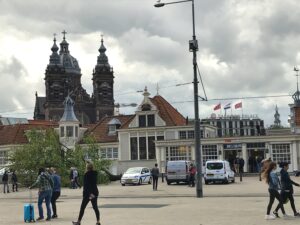 After we took a tour of the Anne Frank house, we took a cruise ferry tour on an orange ferry along the Prinsengracht canal. We saw the architectural buildings and we learned about the history of the Netherlands and Amsterdam. During the 17th century, there was a Golden Age in the Netherlands when painters such as Jan Steen, Vincent Van Gogh, and Johannes Vermeer flourished.
After we took a tour of the Anne Frank house, we took a cruise ferry tour on an orange ferry along the Prinsengracht canal. We saw the architectural buildings and we learned about the history of the Netherlands and Amsterdam. During the 17th century, there was a Golden Age in the Netherlands when painters such as Jan Steen, Vincent Van Gogh, and Johannes Vermeer flourished.